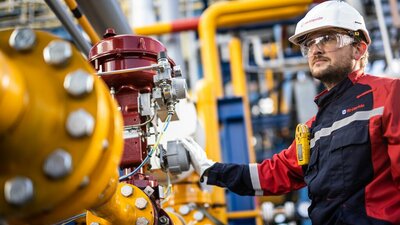Can natural hydrogen decarbonize the planet? Find out more with Régis Réau, R&D Scientific Director at Air Liquide
Published on December 14, 2023
3 minutes

Since the discovery of new deposits in France, “white” hydrogen has been making the headlines and a constant topic of debate within the scientific community. To find out more about the potential of this naturally available energy source, we spoke with Régis Réau, R&D Scientific Director at Air Liquide, and asked him three questions.
Can you explain what “white” hydrogen is?
For starters, I call it “native” hydrogen, rather than “white” hydrogen; the term refers to natural hydrogen that occurs in its natural state, as opposed to being produced. Hydrogen is the most abundant element in the universe. On Earth, it is usually combined with other atoms, as in water (H2O), but it can also be found in its pure form. Since it was first discovered in the early 1970s, more than 300 sources of natural hydrogen have been identified, including in the depths of the oceans, in areas where several tectonic plates meet and in sedimentary basins. The most recently discovered deposit is in Lorraine in France; this explains the current debates about native hydrogen at a time when industry and governments are working to massively increase the use of this molecule to decarbonize industry and transport.
What are the potential advantages of natural hydrogen?
Firstly, natural hydrogen has a low carbon footprint. Secondly, it’s an abundant source of energy, with a large number of potential deposits all over the world: it can be extracted by drilling in deep water, on land or in underground deposits. Underground sources have been identified in Mali, the United States and, as I said, recently in France.
So why continue to produce hydrogen when we could extract it?
Although we’ve known about the existence of deposits for many years, we are still at an early stage in terms of our understanding of natural hydrogen. Its formation and movement beneath the surface of the Earth and the oceans are still the subject of debate within the scientific community. Using natural hydrogen currently presents considerable challenges, including the accessibility of deposits, their unknown size and the different levels of pressure and purity. Despite estimates that the natural flow of hydrogen could reach 50 million tons a year, most deposits are too small to be used commercially today. For now, we need to produce hydrogen to tackle climate change. At Air Liquide, we are developing the large-scale production of low-carbon and renewable hydrogen as we work toward decarbonizing industry and transport.


